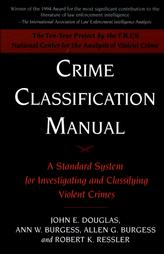| Mark Olshaker | |
|---|---|
| Born | February 28, 1951 Washington, D.C. U.S. |
| Alma mater | George Washington University |
| Occupation | Author |
Mark Olshaker (born February 28, 1951) is an American author from Washington, D.C. who frequently collaborates with FBI agent, John E. Douglas in books regarding criminal and investigative psychology. In 1995 they formed Mindhunters, Inc and later released Mindhunter: Inside the FBI's Elite Serial Crime Unit , which was made into a Netflix series Mindhunter in 2017. [1] [2]

Washington, D.C., formally the District of Columbia and commonly referred to as Washington or D.C., is the capital of the United States. Founded after the American Revolution as the seat of government of the newly independent country, Washington was named after George Washington, first President of the United States and Founding Father. As the seat of the United States federal government and several international organizations, Washington is an important world political capital. The city is also one of the most visited cities in the world, with more than 20 million tourists annually.
John Edward Douglas is a retired special agent and unit chief in the United States Federal Bureau of Investigation (FBI). He was one of the first criminal profilers and has written books on criminal psychology.

Mindhunter: Inside the FBI's Elite Serial Crime Unit is a 1995 non-fiction crime book written by retired FBI agent John E. Douglas and his coauthor Mark Olshaker.
Contents
Olshaker worked with public health scientist, Michael Osterholm, detailing the medical system's lack of preparation for another pandemic in their book Deadliest Enemy: Our War Against Killer Germs. [3] In his New York Times article "We’re Not Ready for a Flu Pandemic", Olshaker criticized the lack of funding the government invested in developing a flu vaccine, citing the National Institutes of Health only received $32 million and Biomedical Advanced Research received $43 million for such research in 2017. [4] [5]

Michael T. Osterholm is a public health scientist and a biosecurity and infectious disease expert in the United States. Osterholm is the director of the Center for Infectious Disease Research and Policy (CIDRAP) at the University of Minnesota and a Regents Professor, the McKnight Presidential Endowed Chair in Public Health, a Distinguished Teaching Professor in the Division of Environmental Health Sciences, School of Public Health, a professor in the Technological Leadership Institute, College of Science and Engineering, and an adjunct professor in the University of Minnesota Medical School, all at the University of Minnesota. He is also on the Board of Regents at Luther College in Decorah, Iowa.

The New York Times is an American newspaper based in New York City with worldwide influence and readership. Founded in 1851, the paper has won 127 Pulitzer Prizes, more than any other newspaper. The Times is ranked 17th in the world by circulation and 2nd in the U.S.

The National Institutes of Health (NIH) is the primary agency of the United States government responsible for biomedical and public health research. It was founded in the late 1870s and is now part of the United States Department of Health and Human Services. The majority of NIH facilities are located in Bethesda, Maryland. The NIH conducts its own scientific research through its Intramural Research Program (IRP) and provides major biomedical research funding to non-NIH research facilities through its Extramural Research Program.
Olshaker is a supporter of victims' rights. [6]








